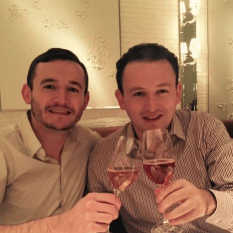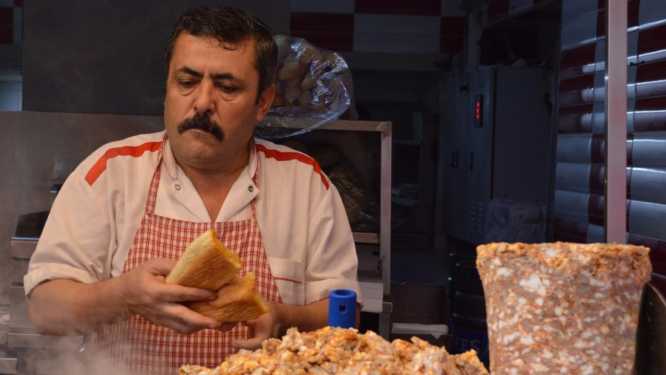
Awash with Istanbul’s fishy migrants
A timeless corner of Turkish culinary delight
It is the season for fish in Turkey apparently. A line is drawn under fishing bans as migrants swamp the Bosphorous on their way to the Black Sea. Kadiköy market, on Istanbul’s Anatolian Side, is awash with red mullet (barbun in Turkish), horse mackerel (palamut), bluefish (lüfer), hamsi (a sort of anchovy), sea bass (levrek) and wriggling crabs.
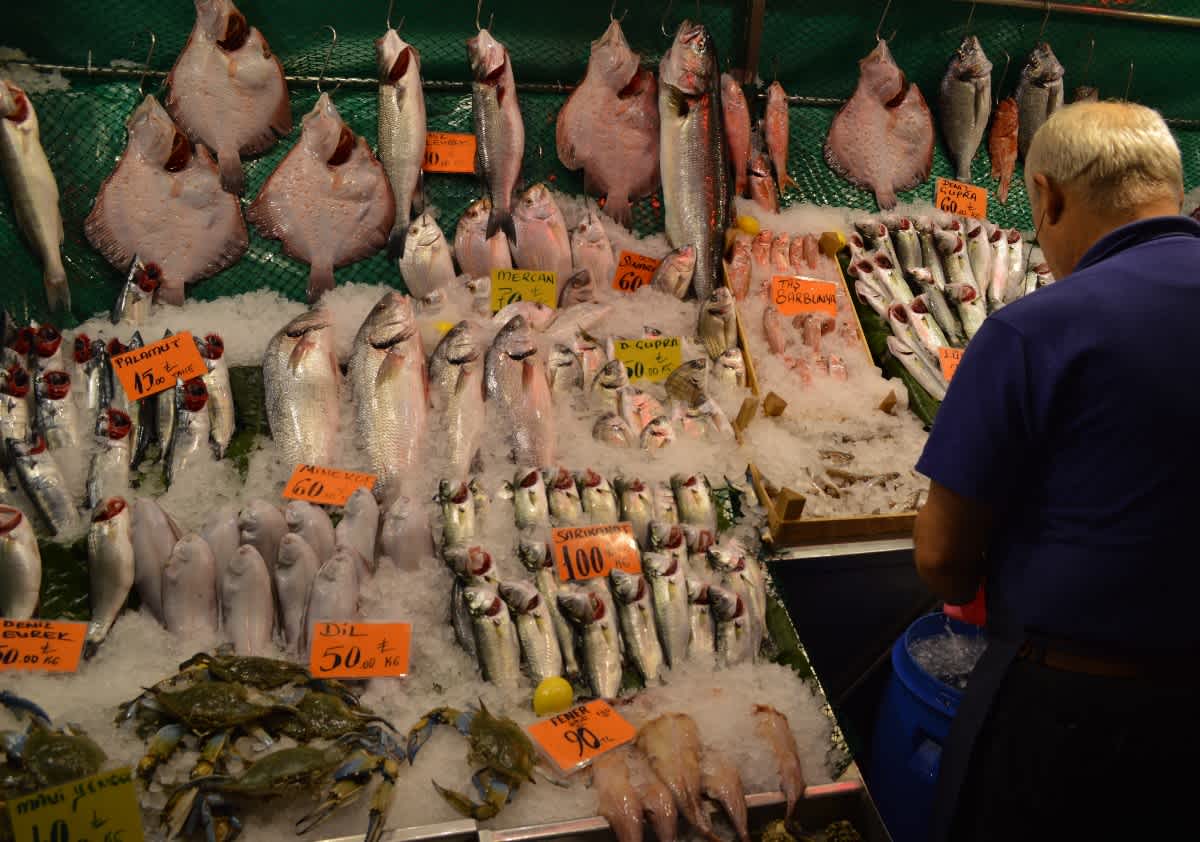
The fishmongers flick icy water to keep the gills red and moist, and the eyes clean and sharp (two sure signs of freshness). One sardine contorts into a boomerang shape before propelling itself with elastic effect into momentary and suspended freedom, before the thumb and forefinger of a five year old come to the rescue; not of the fish, for their fate is sealed, but of the fishmonger, who again scoops up the suicidal sardine. She scowls and curses those who themselves wouldn't want to be eaten.
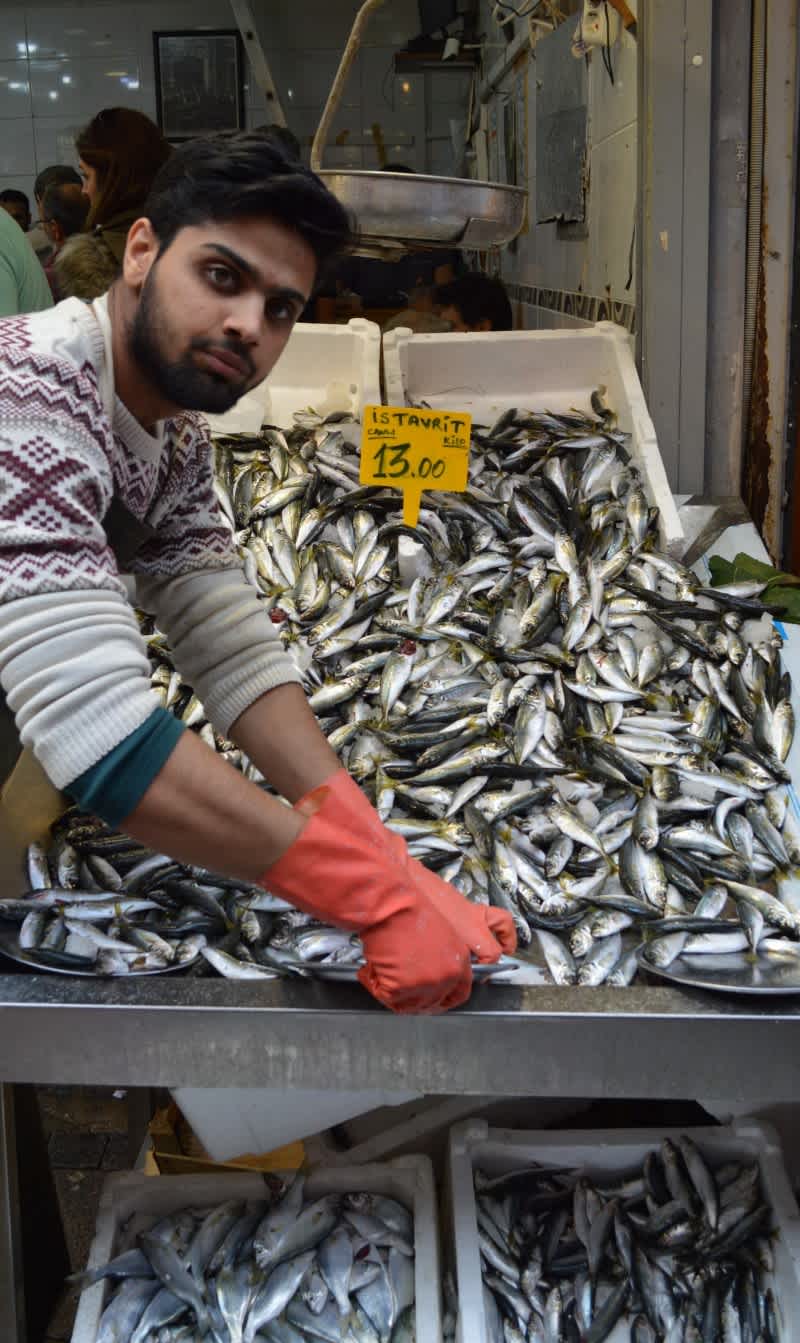
The fish are flung into shadowy corners to be filleted by men with various sizes, shapes and densities of moustache. I wonder about their fingertips as they gaze wearily at the passing trade, and imagine the cuts and grazes suffered by the more inexperienced. They decorate their handy work with frilly red necklaces that give the fish a pantomime appearance. Fat cats nearby feast on fallen fruits of the sea.
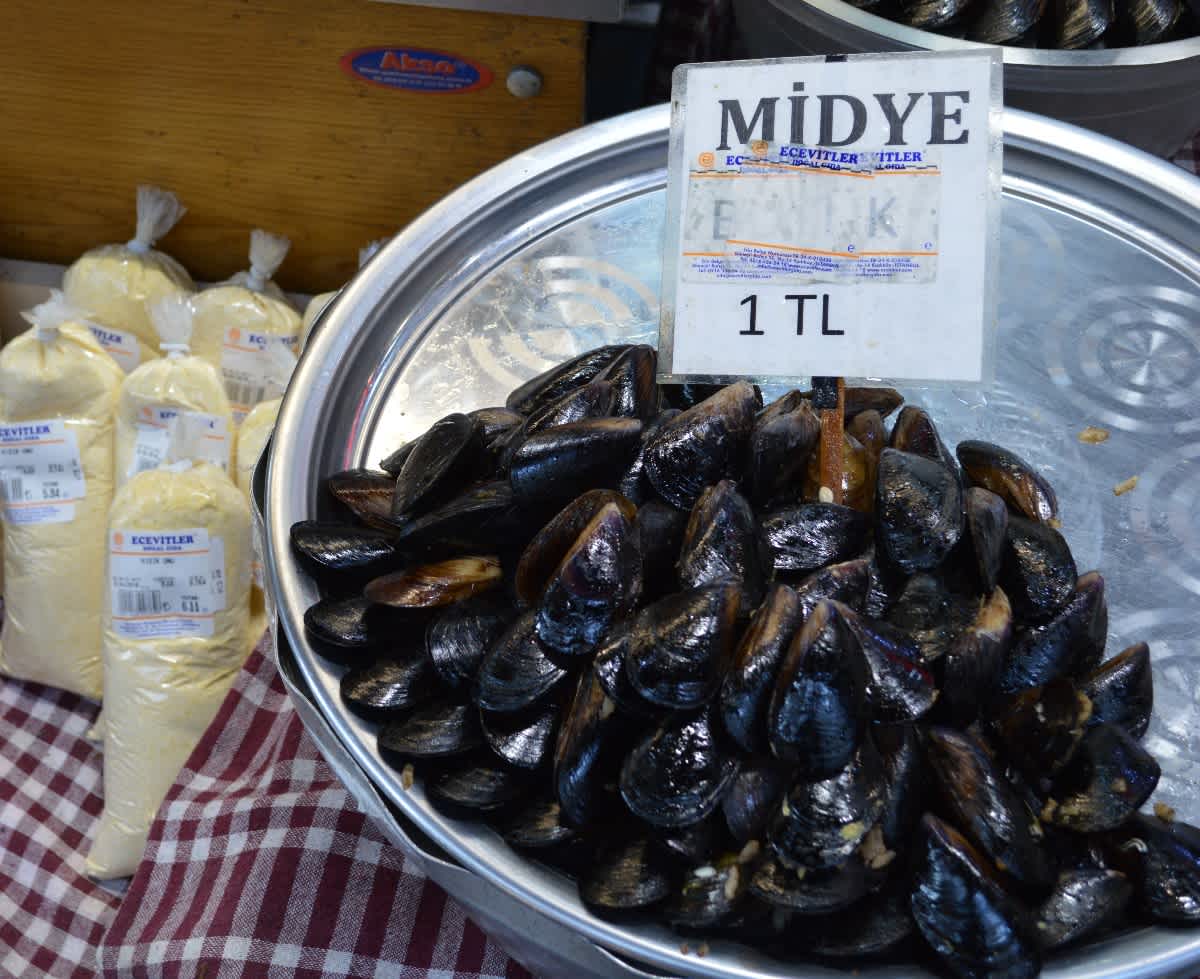
There are other knives, saws and cleaves franticly dividing, dicing and dissecting. The rhythmic pounding of meat shuffles the pack of human sardines deeper into the narrow, labyrinthine market. Bags and elbows collide as impatient shoppers dart in and out of the invisible lanes. Bujrum! (‘help yourself!’) the market traders shriek over the din of Saturday afternoon commerce.

A gentleman selling walnuts and chestnuts disappears in and out of a doorway, as if retreating through a passageway to an abundant and tranquil orchard. He doesn't so much as crack a smile. Opposite, strings of dried produce - peppers, tomatoes - are unhooked like suits in a dry cleaners. Perspective customers sample olives, spitting their stones into a plastic cup with varying degrees of success and dignity.
There are kaleidescopes of sweets, piles of figs (fresh, dried or candied), bunches of vine leaves (waiting to be stuffed with rice and rolled like tobacco) and bowls of chickpeas (being stirred like candyfloss). Butchers offer tripe, brain and feet (nothing is wasted), whilst the bakers tempt with Katmer (a flaky pastry), Kunefe (a syrup-soaked cheese pastry) and Simit (circular breads). Bees and their honeycomb are on display in a plastic case. Tea is drunk from hip-shaped glasses; coffee prepared in traditional cezve (copper pots). One can refresh (if that is the right word) with turnip juice.
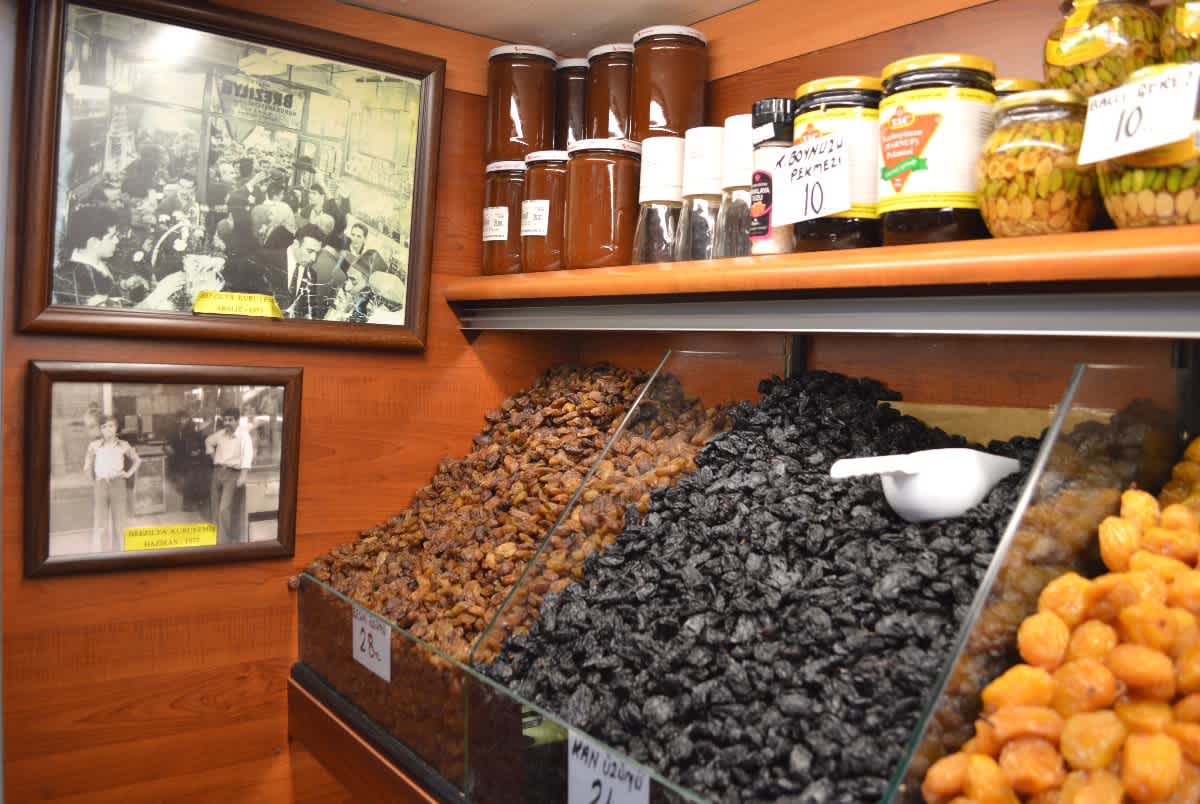
There are more ingredients than I know what to do with and ingredients that surely no one knows how to use - bitter melon with olive oil? It is a veritable treasure trove of scents and sensations. Once upon a time such spices would have commanded a princely price. Today, however, the brand that is king. “We have excellent hazelnuts and milk,” I'm told, “but we don't have a brand like ‘Ferrero’” (makers of the Ambassador’s guest spoiling Rocher).
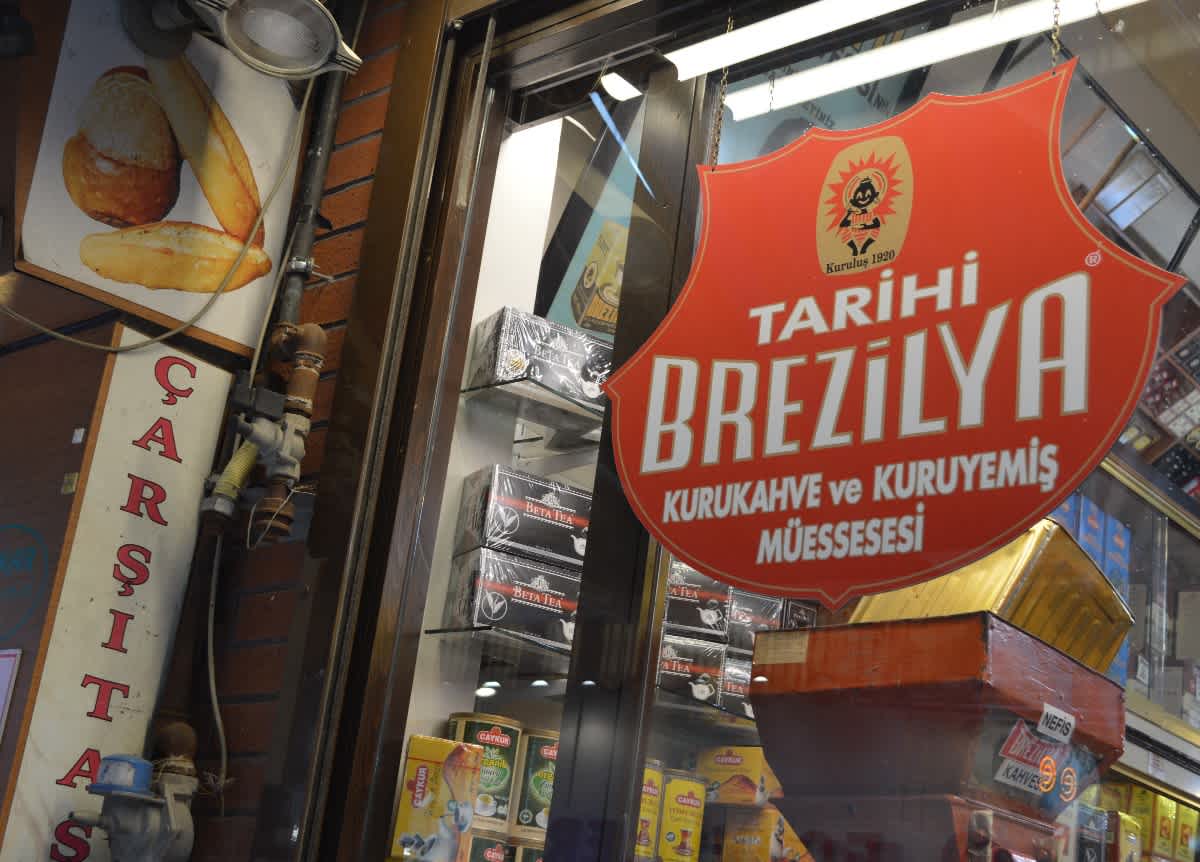
Kadiköy market boasts very few ‘brands’, save those shops and stalls drawing upon years of history; boasting several generations of owners but the very same displays and ways. There may be differences between the seasons, but very few between the ages. It is a timeless corner of Turkish culinary delight.
Ian is a writer based in the Balkans. He is the author of 'Dragon's Teeth - Tales from North Kosovo' and 'Luka'. Follow Ian on Twitter @bancroftian.
Currently in: Belgrade, Serbia — @bancroftian
